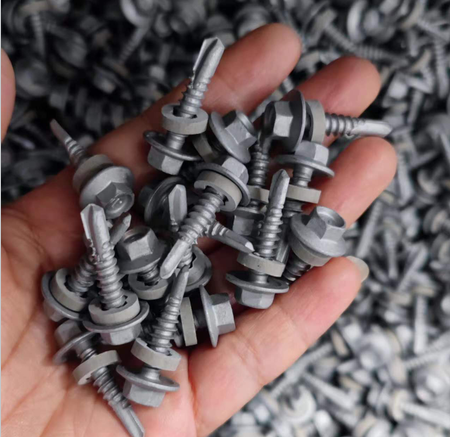Choosing the Right Length of Drywall Screws for Your Home Improvement Projects
Understanding the Importance of Correct Drywall Screw Length
When it comes to installing drywall, one of the most critical factors to consider is the correct length of drywall screws. The right screw length ensures a strong and durable bond between the drywall sheets and the framing beneath, which in turn affects the overall integrity and appearance of the finished wall. This article delves into the significance of selecting the correct drywall screw length, the factors influencing this choice, and guidelines for proper installation.
The Importance of Screw Length
Drywall screws are specifically designed to hold drywall panels securely in place. Using the correct screw length is essential for several reasons
1. Structural Integrity Screws that are too short may not penetrate the underlying framing sufficiently, leading to loose panels that can buckle or sag over time. Conversely, screws that are too long can pierce electrical wires, plumbing, or even compromise the integrity of the framing itself.
2. Finish Quality A proper screw length allows for clean installation, ensuring that screws lie just below the surface of the drywall without tearing the paper face. This makes for easier joint finishing and creates a smooth surface for painting or wallpapering.
3. Time and Cost Efficiency Selecting the right screw length can reduce the likelihood of installation mistakes. Short screws require more effort to install and can lead to unnecessary repairs or rework if panels come loose or require additional fastening.
Factors Influencing Screw Length Selection
Several factors influence the selection of the appropriate drywall screw length
correct drywall screw length factory

1. Drywall Thickness Common drywall thicknesses are 1/2 inch and 5/8 inch. For 1/2-inch drywall, 1-1/4 inch screws are typically used, while 5/8-inch drywall generally necessitates 1-5/8 inch screws. This ensures that there is enough screw length to reach and grip the underlying stud.
2. Type of Framing The materials used in framing—wood or metal—may also dictate screw length. Metal studs typically require self-drilling screws that are longer for adequate penetration, while wood studs can often accommodate standard drywall screws.
3. Installation Method If you are using a thicker material or additional layers of drywall for soundproofing or fire resistance, you might need longer screws. Additionally, the method of installation (e.g., fastening to studs or using furring strips) can also impact the screw length choice.
Guidelines for Proper Installation
To ensure a successful drywall installation, consider the following guidelines regarding screw length
- Use the Right Type Always choose screws specifically designed for drywall applications. These screws feature a sharp point and coarse threads for optimal holding power.
- Spacing Matters Place screws approximately 16 inches apart along the edges of the drywall and every 24 inches in the field (the center area between edges). This spacing helps distribute weight evenly and enhances overall stability.
- Drive Depth When installing screws, aim to drive them just below the surface of the drywall. Avoid sinking them too deep, as this can lead to paper damage, while screws left protruding can complicate finishing.
In conclusion, selecting the correct drywall screw length is crucial for achieving a successful drywall installation. By understanding the factors that influence screw length and following proper installation practices, contractors and DIY enthusiasts can ensure a solid, aesthetically pleasing wall that will withstand the test of time. As with any construction project, investing the time to get the details right pays off in the long run.
-
Top Choices for Plasterboard FixingNewsDec.26,2024
-
The Versatility of Specialty WashersNewsDec.26,2024
-
Secure Your ProjectsNewsDec.26,2024
-
Essential Screws for Chipboard Flooring ProjectsNewsDec.26,2024
-
Choosing the Right Drywall ScrewsNewsDec.26,2024
-
Black Phosphate Screws for Superior PerformanceNewsDec.26,2024
-
The Versatile Choice of Nylon Flat Washers for Your NeedsNewsDec.18,2024










